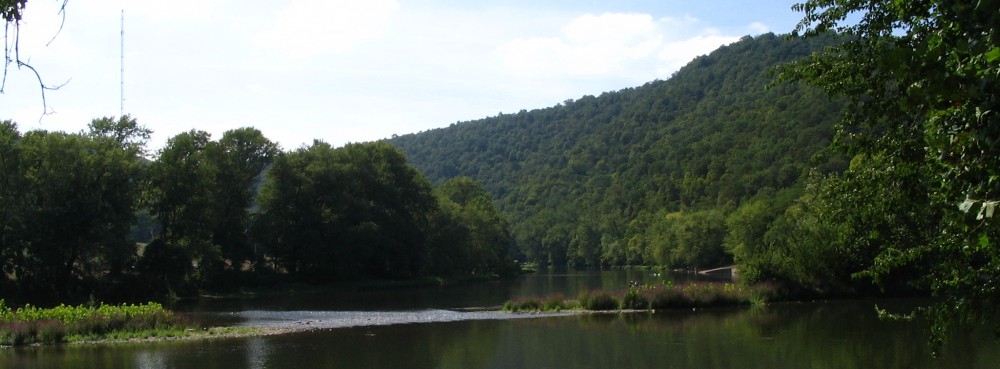California Quarries
Blair County, Pennsylvania
1999
On our annual trip to Central Pennsylvania, my family and I always try to experience or discover something new. Having grown up in Altoona, I spent what seemed, back then, like endless Sunday afternoons exploring the countryside with my parents. I am still amazed at finding yet another spot whose beauty has been hidden from us, just beyond the next curve in the road.
In August this year, our adventure took us rock hunting. Using a new guidebook we picked up at our rock and mineral club, we were very excited about the possibility that many places already familiar to us were also great places to collect rocks. The book listed abandoned quarries, along Elk Run, near Tyrone as a place where we might find fossils and calcite. It also mentioned that people had been using the place to dump their unwanted appliances and warned collectors to be careful. Although, I thought this may not be the best place to take the kids, we decided to at least check it out. What we found was a real treasure, the California Quarries.
As luck would have it, the first wrong turn we made led us directly to the home of Joseph Gurekovich, the new owner of the California Quarries. He very graciously accompanied us on a tour of the quarries and told us about its long history. He was born and raised on this land and spent his childhood swimming, skating, hunting and fishing in these woods. He developed a deep respect and an appreciation of its beauty and its significance. Inattention over the years by previous owners, who lived out of state, led to its slow demise. Misuse led to it being more well known for loss of life than its legacy. Mr. Gurekovich and his family now protect this scenic spot. Their hope is to preserve the land as a wildlife habitat and secure its place in history, a history that may not be well known.
The four quarries known as the California Quarries were named in memory of the many European immigrants who were fooled into believing they were being taken there to mine for gold. They were worked by succeeding generations of these men using mules, donkeys, wagons and mining cars. The stone was transported by rail to Pittsburgh and used to flux steel and build roads all over the nation. The quality of the limestone mined from these quarries, during the 1700’s until the mid 1900’s, was well known as the best in the country. It was also processed into lime for agriculture, white wash and construction. A macadam plant once stood at the end of Gurekovich Hollow . . . all that is left are the piers of its foundation and brick abutments. Four limestone kilns remain somewhat intact in hope that in the future they may be restored as part of this area’s historic past.
The Gurkevich family has been steadily working to reclaim the land. After removing most of the trash, cars from the quarry waters, and putting a stop to misuse, they have reversed its course. Smooth soaring cliffs rise above crystal clear waters filled native Pennsylvania fish: bass, trout, northern pike. The view is spectacular. A natural wetland attracts blue heron, wood ducks, and mallards. . Year round residents include whitetail deer, bear, many species of turtles and a variety of other Pennsylvania birds and animals. Even an American bald eagle has made its home on the cliffs
During our visit that day the natural beauty of this place quicky eclipsed our interest in rock hunting. We found a few calcite crystals for our collection, but we look forward to returning another brilliant summer day or crisp fall afternoon to walk the trails and enjoy the scenery. Blair County is fortunate to have a neighbor like Joseph Gurekovich. Dreams like his make life for the rest of us a little bit richer.
© 1995-2014 Ginette Isenberg
